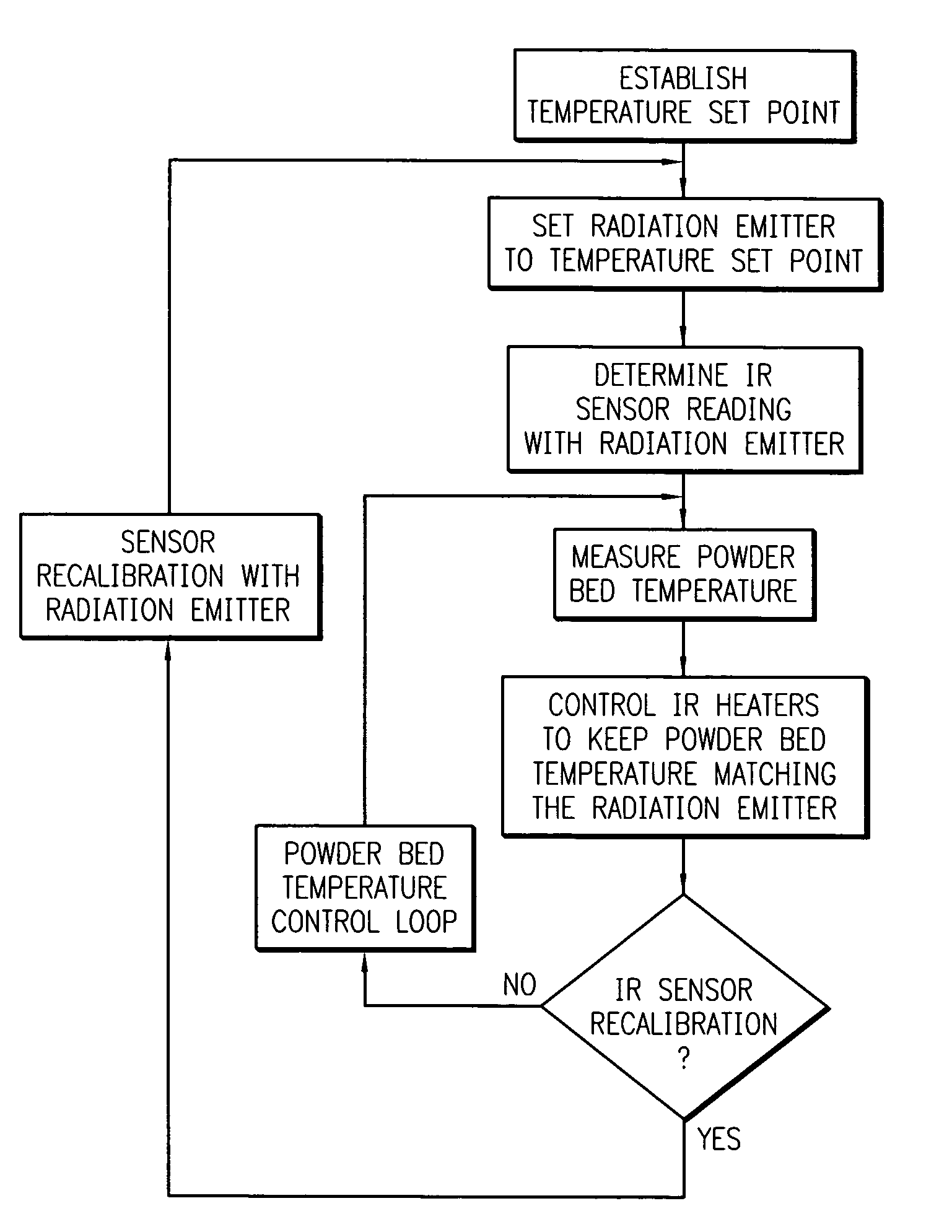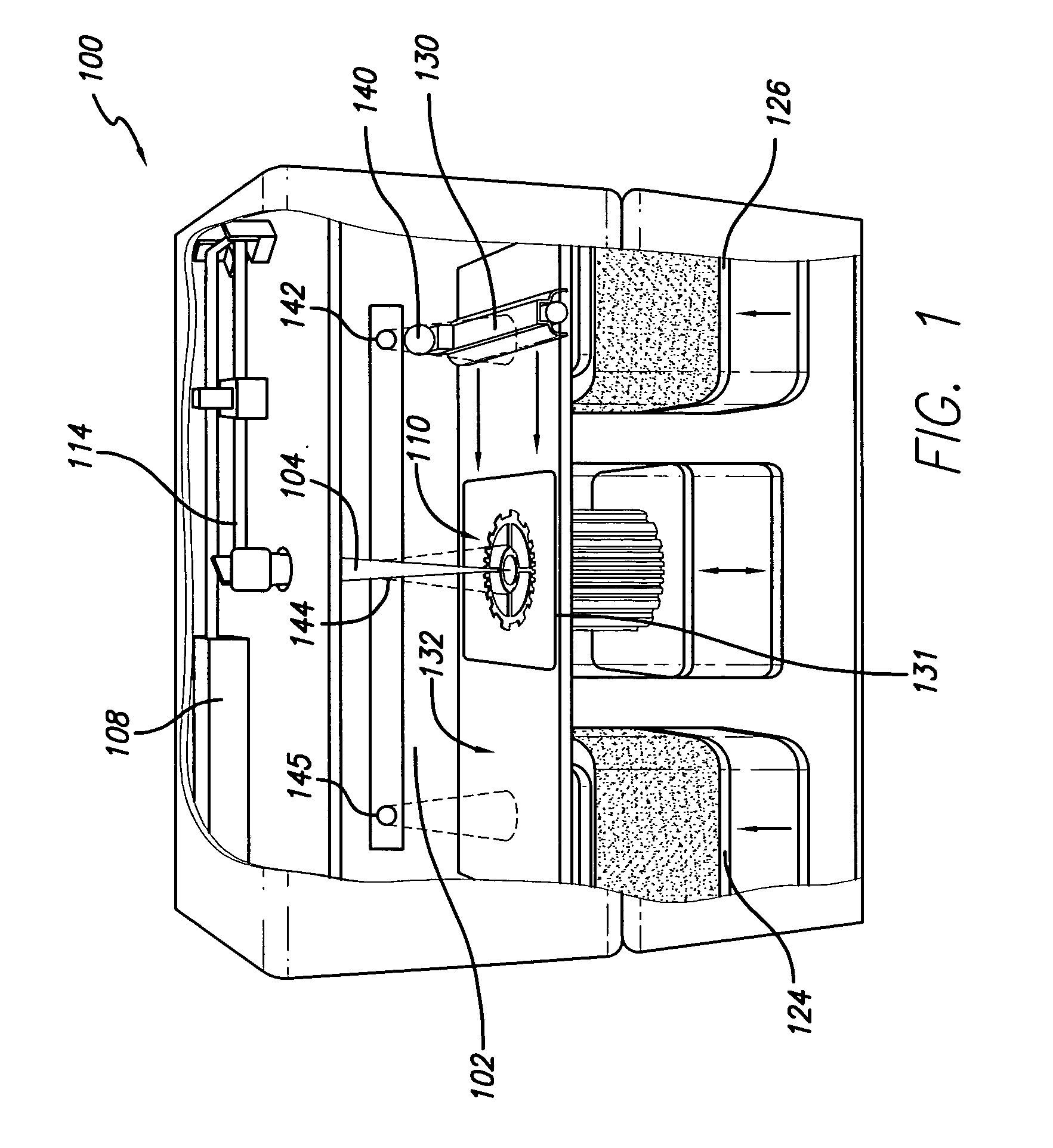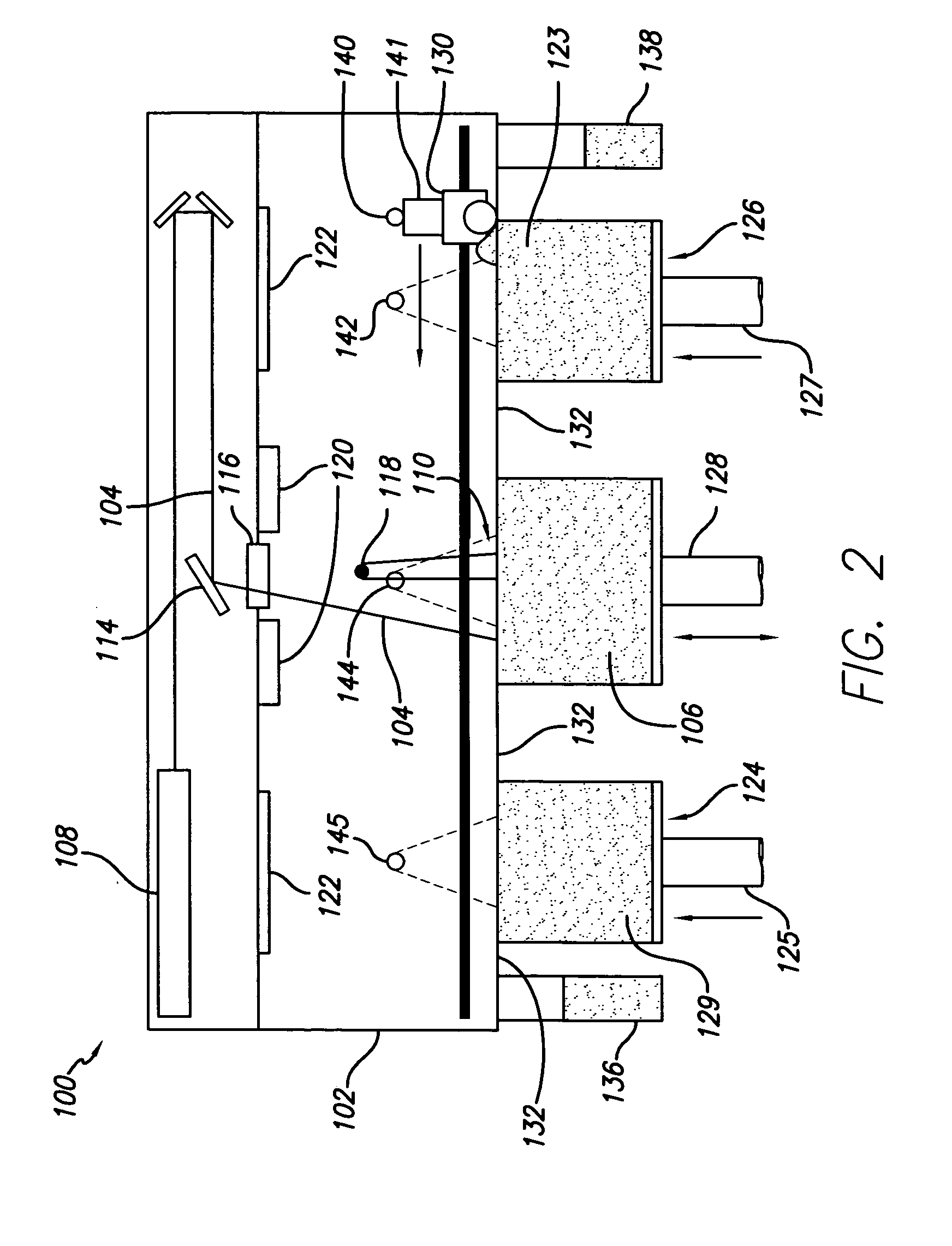Continuous calibration of a non-contact thermal sensor for laser sintering
a non-contact thermal sensor and laser sintering technology, applied in the field of freeform fabrication, can solve the problems of reducing the accuracy of measurement, slow contact sensor, prone to disturbance or jarring, etc., and achieves high repeatability, accurate monitoring, and consistent mechanical properties.
- Summary
- Abstract
- Description
- Claims
- Application Information
AI Technical Summary
Benefits of technology
Problems solved by technology
Method used
Image
Examples
Embodiment Construction
[0028]FIG. 1 illustrates a rendering of a selective laser sintering system indicated generally by the numeral 100. Such a system is currently sold by 3D Systems, Inc. of Valencia, Calif. FIG. 1 is a rendering shown with the doors removed for clarity. A carbon dioxide laser and its associated optics are shown mounted in a unit above a process chamber 102. The process chamber 102 includes a powder bed 132, two powder feed systems 124 and 126, and a leveling roller 130. A black body radiation emitter 140 is shown mounted to the leveling or counter-rotating roller 130. Within the process chamber 102 the appropriate temperature and atmospheric composition for the fabrication of the article are maintained. The atmosphere is typically an inert atmosphere, such as nitrogen.
[0029]Operation of this conventional selective laser sintering system 100 is shown in FIG. 2 in a front view of the system with the doors removed for clarity to illustrate the laser sintering process. A laser beam 104 is ...
PUM
| Property | Measurement | Unit |
|---|---|---|
| Area | aaaaa | aaaaa |
| Energy | aaaaa | aaaaa |
Abstract
Description
Claims
Application Information
 Login to View More
Login to View More - R&D
- Intellectual Property
- Life Sciences
- Materials
- Tech Scout
- Unparalleled Data Quality
- Higher Quality Content
- 60% Fewer Hallucinations
Browse by: Latest US Patents, China's latest patents, Technical Efficacy Thesaurus, Application Domain, Technology Topic, Popular Technical Reports.
© 2025 PatSnap. All rights reserved.Legal|Privacy policy|Modern Slavery Act Transparency Statement|Sitemap|About US| Contact US: help@patsnap.com



